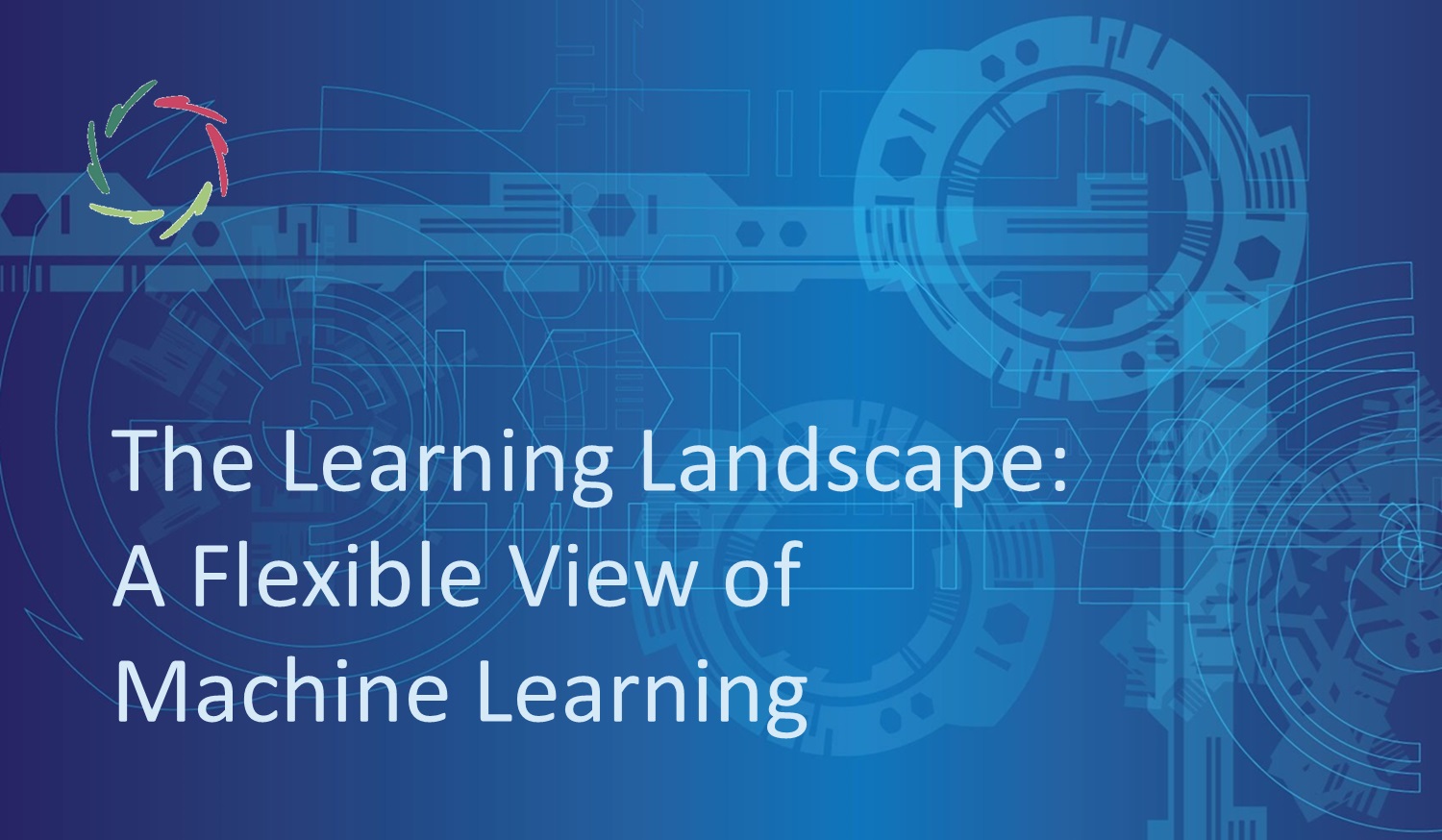The Learning Landscape: A Flexible View of Machine Learning

Machine learning is often divided into neatly defined categories: supervised, unsupervised, semi-supervised, and reinforcement learning. In reality, learning – whether in machines or humans – functions more like a fluid landscape, where different approaches blend and interact.
In this blog, we’ll explore the concept of the ‘learning landscape,’ where traditional types of machine learning are seen as points within a continuum. This way of thinking opens up new possibilities for creating hybrid learning systems that adapt dynamically to the environment.
The four pillars of machine learning
Machine learning is traditionally categorized into four types:
- Supervised learning: In this approach, the model learns from labeled data, where the correct answers (labels) are provided. The system’s job is to find patterns between inputs and outputs and generalize these patterns to new, unseen data.
- Unsupervised learning: Here, the model learns from unlabeled data. Its goal is to discover patterns, such as clusters or associations, within the data itself without explicit guidance from labels.
- Semi-supervised learning: Combining the best of both worlds, semi-supervised learning uses a small amount of labeled data alongside a larger portion of unlabeled data. The model can recognize patterns in the labeled data and then apply these insights to better understand the unlabeled portion.
- Reinforcement learning: In this approach, the model, often called an agent, learns through interaction with an environment. Feedback comes in the form of rewards or penalties based on the agent’s actions. The agent’s goal is to maximize long-term rewards by recognizing patterns in the environment that lead to success.
Each of these types of machine learning operates differently, but they all exist within the same fundamental process: recognizing and learning from patterns in data or interaction. Rather than rigid categories, they represent different ways of navigating the same landscape.
The learning landscape: fluidity over fixed categories
Instead of seeing these types of learning as fixed and distinct, it’s more accurate to view them as points within a learning landscape. This landscape represents the full range of learning strategies, where a system can move between different approaches depending on the task, the available data, and the feedback it receives.
Imagine a map where different points represent supervised, unsupervised, semi-supervised, and reinforcement learning. But instead of sharp borders separating them, the terrain is smooth, with fluid transitions between these approaches. For instance, a system may start with supervised learning when labeled data is abundant but later shift toward unsupervised learning as new data arrives without labels. Similarly, reinforcement learning might begin with clear rewards but evolve into a more exploratory process, blending unsupervised techniques to discover new strategies.
This fluidity gives machine learning systems a flexibility that allows them to adapt in real-time, combining learning strategies as needed rather than sticking to rigid methods.
Flexibility across the landscape
One of the most exciting aspects of this view is the blurring of lines between learning types. For instance, active learning involves a model intelligently selecting which data points to label, blending supervised and unsupervised learning. In self-supervised learning, the model creates its own labels from the data, turning unsupervised learning into something that resembles supervised learning. Similarly, transfer learning allows a system to take what it has learned from one domain (say, image recognition) and apply it to another (like object detection), crossing the boundaries between supervised and unsupervised learning.
These hybrid methods show that the learning landscape is not fixed but ever-evolving. The flexibility to move across this landscape enables machine learning systems to adapt to real-world problems more efficiently, often combining the strengths of different learning approaches.
What the human brain teaches us about flexibility
The human brain provides valuable insights into the flexibility of learning. Human cognition constantly navigates a landscape of pattern recognition, prediction, and adaptation. In fact, much of human learning blends aspects of supervised and unsupervised methods. For example, we learn languages through a mix of explicit instruction (supervised) and immersion (unsupervised), constantly moving between these approaches based on feedback from the environment.
This fluidity in human learning suggests that machine learning systems should also aim for greater adaptability, shifting between learning strategies as circumstances change. By designing systems that can dynamically adjust their learning methods, we move closer to the flexibility seen in human intelligence.
Looking ahead ― the future of learning in A.I.
Viewing learning as a flexible landscape opens up a world of possibilities for the future of A.I. As machine learning systems become more complex, they will likely evolve to blend learning types seamlessly, choosing the most effective strategy for any given situation. We can expect to see more hybrid learning methods that allow systems to dynamically switch between approaches, combining pattern recognition from supervised learning with the exploratory nature of reinforcement learning.
This evolution is crucial for solving complex real-world problems where data might be incomplete, feedback might be delayed, and environments may be constantly changing. In these cases, systems that can move across the learning landscape with ease will have a significant advantage.
Embracing the learning landscape
By thinking of learning as a primordial landscape, we allow ourselves to break free from rigid categories and embrace a more flexible, adaptable view of how systems learn. Whether it’s through labeled data, pattern discovery, or interactive feedback, machine learning is all about navigating this landscape, with each point offering a different path to discovery.
As we look to the future, it’s clear that the most successful systems will be those that can seamlessly explore the entire learning landscape, blending approaches to solve ever more complex problems.
This adaptability, inspired by both machine learning and human cognition, will drive the next wave of intelligent systems.


